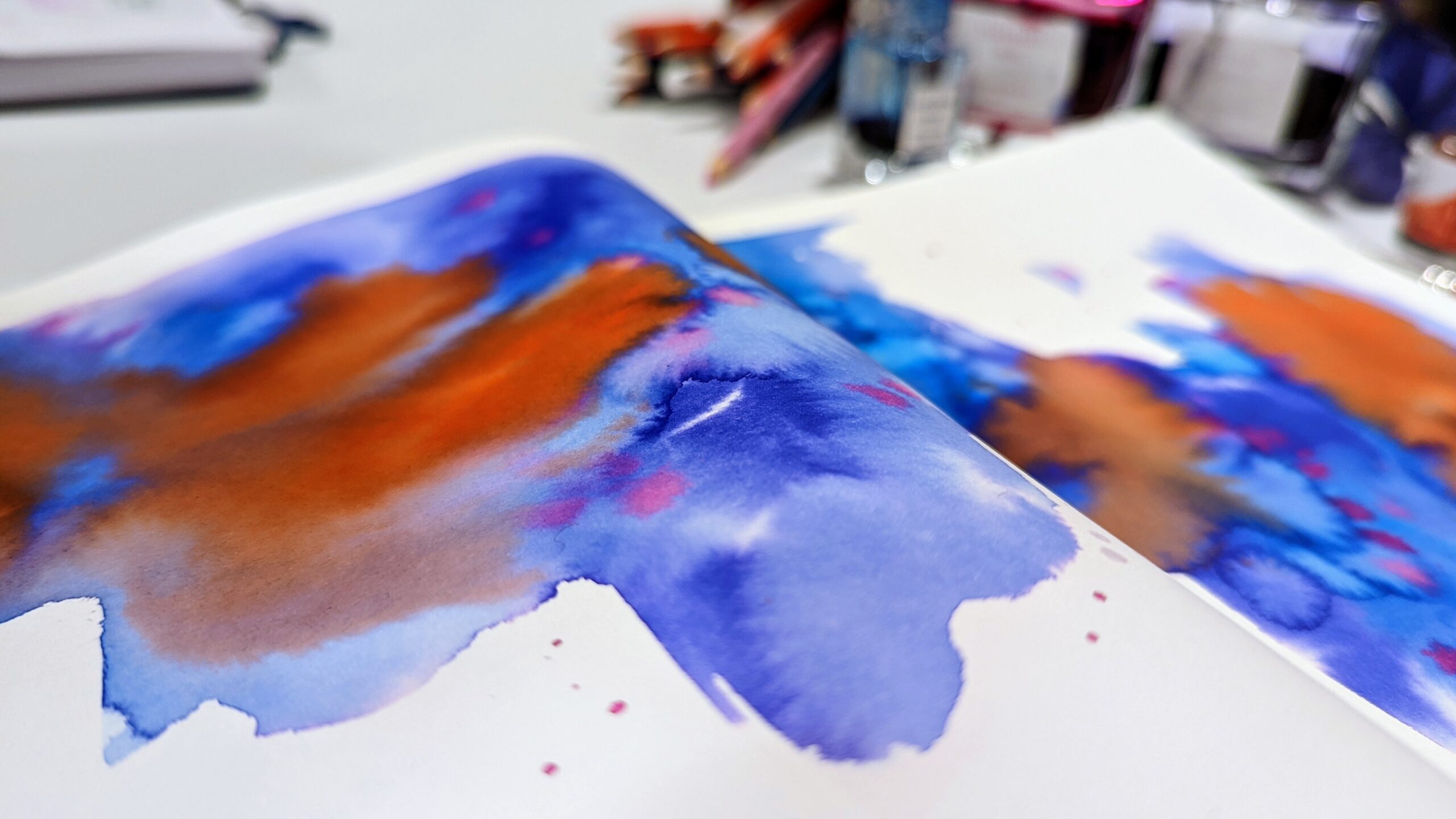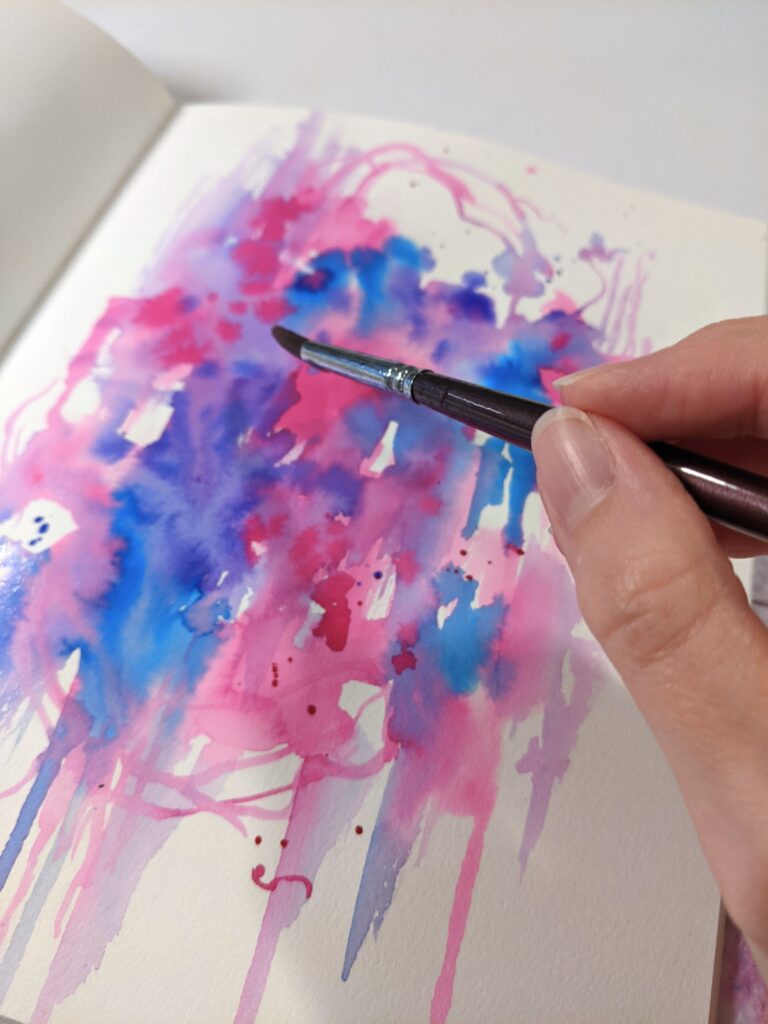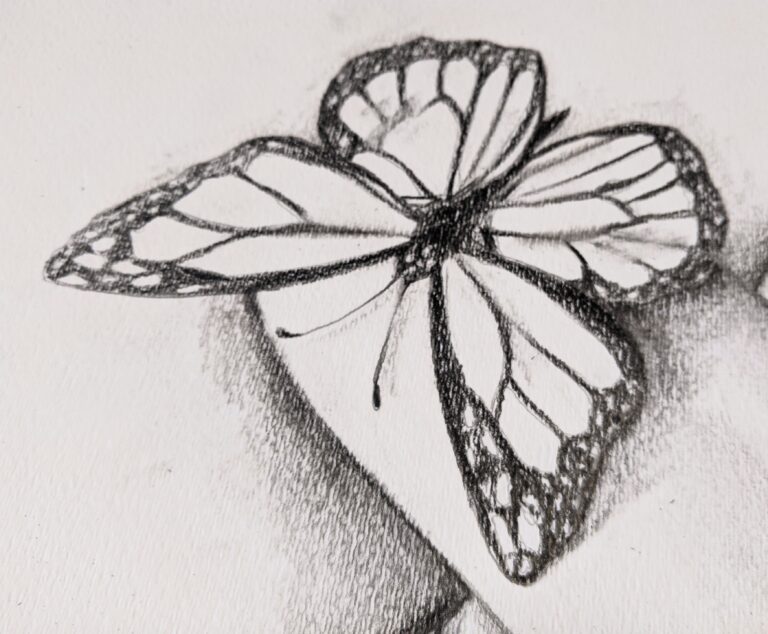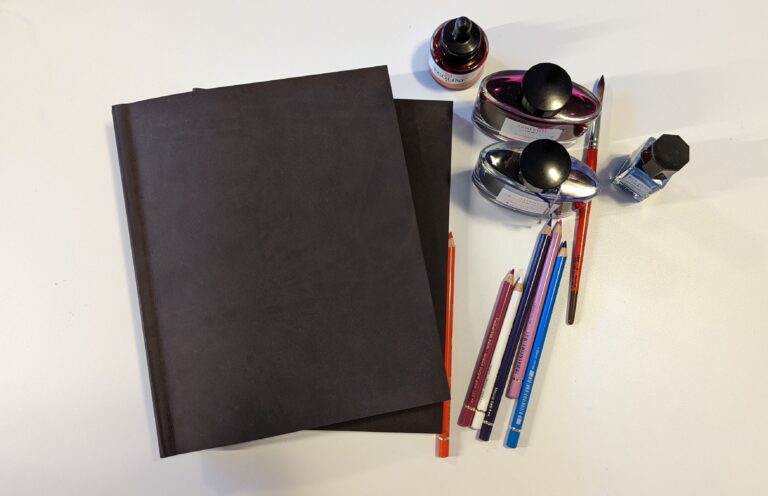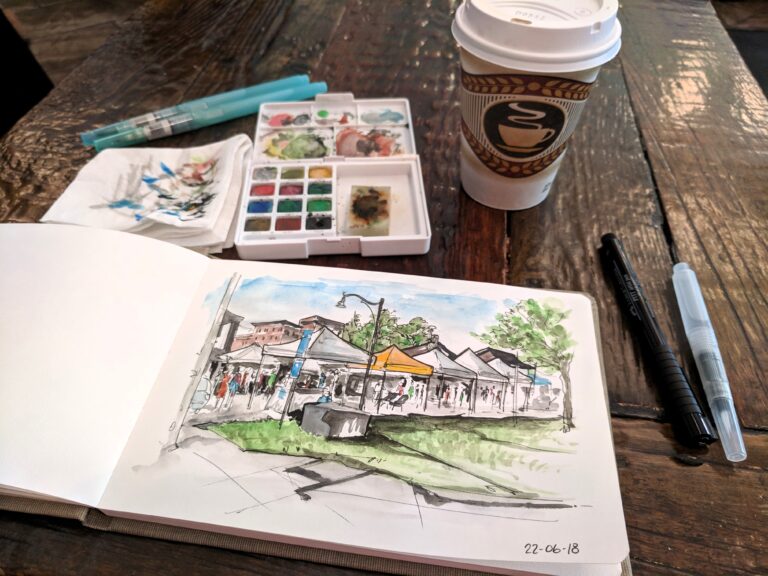I started writing art and lifestyle goals for myself a few years ago. Back then, my goals were vague and felt unattainable. Over time, I’ve learned a lot about setting realistic yearly goals.
Don’t get me wrong—it’s okay to dream big! That’s why you have long-term goals (5 to 10 years from now) and slowly work towards accomplishing them.
As a beginner, it may seem daunting if you’ve never written any art goals. But don’t worry, I’ll guide you through the process.
Be prepared to answer a series of questions to learn about S.M.A.R.T. goals and how to write them including fun ways to keep track of these goals over the year to stay on track.
So keep reading if you want to find your art goals in three easy steps!
Step 1: Finding your motivation
Let’s start by asking why you’re setting these new art goals.
In my experience, finding our motivation and looking at the big picture can help us stay focused during the year.
You also have to figure out how much time you can dedicate to these personal goals, keeping your existing schedule (school, work, chores, family time) in mind.
In my case, this free time accounts for about 2-3 hours a day, five days a week. It will determine whether you can complete only one sketchbook this year or several.
You know yourself best! Pick small goals that are challenging yet doable for your time frame.
If you accomplish all of your goals halfway through the year, congratulations! That’s awesome. Now, you can keep writing more goals for the next half.
I’ve made it easy for you by creating a list of questions below. I included random examples to help you formulate your responses. Take as much time as you need because this step is crucial.
Revisit these questions every year if needed. Our goals change over time, that’s completely normal. It’s also ok if you change your mind or if something better comes along and you pivot during the year.
7 questions to help you find your art goals:
1) Why do you make art?
Example: Drawing makes me feel happy and helps me relax after a stressful day.
2) What kind of art or artists do you admire?
Example: I love abstract expressionism because of the vibrant colour palette, movement and composition. I’d like my paintings to be as free and bold as Jackson Pollock’s.
3) Is art a hobby? Or a future career?
Example: Yes, I would like to make art for a living. Ideally, I’d sell original artwork and special edition prints.
4) Can you describe your art in one sentence?
Example: I make semi-abstract acrylic landscape paintings.
5) Are you planning to go to art school?
Example: I’d like to join a program at my local university to earn a BFA.
6) Are you trying to improve a specific technique or measure your progress over time?
Example: I’d like to learn more about fundamentals and improve my anatomy drawings. I want to measure my progress over a year to look back and see how much I’ve improved.
7) Do you have a long-term art goal?
Example: I want to complete a full sketchbook every year for at least ten years. Instead of having a diary, I want these sketchbooks to represent key moments of my everyday life like an art journal.
After answering all of the questions above, you should have a better understanding of what you want to work towards.
This can be your portfolio to apply to art school or to improve your overall technical abilities.
You can also break down your long-term art goal into yearly goals so that it becomes more manageable.
Step 2: Writing your art goals
Have you ever heard of the S.M.A.R.T. method for writing goals? It stands for:
S – Specific: What is my goal?
M – Measurable: How can I measure my success?
A – Achievable: Is it realistic with my current schedule and lifestyle?
R – Relevant: Will this goal help me towards my long-term goals?
T – Time-Bound: When should this goal be completed?
If you want a detailed explanation of how to write goals with the S.M.A.R.T. method, please refer to this article.
By using this framework, your goals will be anything but vague! Try not to overthink it. The point is to be specific, and that’s the main takeaway here.
Note: As a beginner, I would avoid creating goals…
- About social media followings and popularity.
- That start with words like “mastering” or “becoming proficient at…”.
- Focused on uncontrollable factors like “going viral”.
- That you have to do daily for a prolonged period, like “painting every day for a year”.
Example of a S.M.A.R.T. goal: I will join an 8-week Introduction to Drawing course during the summer to learn about the fundamentals to improve my portraits.
Specific: Improve my portraits by taking the Introduction to Drawing course.
Measurable: 8-week program.
Achievable: Just one class a week for 8 weeks fits into my schedule.
Realistic: This is a level 1 course for beginners.
Time-bound: Summer 2025.
Art goals examples I’d recommend for beginner artists
- Fill out a 100-page sketchbook by December 31st.
- Join an 8-week Introduction to Drawing course during the summer to learn about the fundamentals of drawing so that I can improve my portraits.
- Participate in the Inktober event, drawing one prompt every day in October.
- I will work on new paintings for my portfolio, making one painting every two weeks between January and June, for a total of 13 paintings*.
- Read one new book every month of the year to learn about art history.
- Make Fanart in a sketchbook every Friday while watching my favourite shows.
- Create a collection of 10 paintings (one per month from January to October) to gift to my family members at Christmas.
- Focus on a weakness (like hands or backgrounds or faces) and dedicate one page in my sketchbook every week from June to September to improving my abilities.
Now try to write between one to three art goals for the year.
*If you’re lacking inspiration, I also created a list of 26 unique painting ideas for beginners.
Step 3: Keeping track of your goals
To stay motivated throughout the year, keeping track of your goals is essential. In the past, I’ve even forgotten about some of my goals halfway through the year (oops!).
Here are some of my favourite goal-tracking methods broken down into three separate categories:
Paper and pen
Good old paper and pen! This method still works for a lot of people. If you love buying an Agenda or a Planner every year, no need to reinvent the wheel. You can simply add your new art goals to the mix. Some planners even include monthly goal-tracking pages.
Other handmade options are goal charts and pinning your written art goals on a corkboard in your bedroom or office.
Traditional software
If you enjoy simple interfaces with a timeless design, software like Microsoft Excel and Word could be for you.
I use Google’s version called Sheets (Excel alternative) and Docs (Word alternative).
Goal-tracking apps
Goal-tracking apps are for those who need constant visual reminders, just like me. I like to write down my goals, to-do lists (personal and professional) and appointment times on the app, to get reminders on my phone.
One app I’ve been using to write my yearly goals is my cellphone’s basic note-taking app.
This year, I decided to try something different and recently discovered Todoist. Todoist is free for up to five projects/habits you’re trying to keep track of. Similar alternatives are Tick Tick and Habitica. I’ve heard good things about both. They all have free and premium plans.
Key Takeaways
Setting realistic art goals for the new year doesn’t have to be complicated.
Step 1: Finding your motivation
Step 2: Writing your art goals
Step 3: Keeping track of your goals
By answering all of the questions written above in step 1, you now know what to work towards. A new portfolio? Collection? Improving a technique?
Think about your long-term art goals and find yearly objectives that will get you one step closer without feeling overwhelmed.
Write 1-3 art goals for the year using the S.M.A.R.T. framework in step 2.
Finally, keep track of your progress in step 3 with either:
- An agenda or planner
- Goal chart
- Google Sheets / Docs (Microsoft alternative)
- Your cellphone’s basic note-taking app
- Apps like Todoist, Tick Tick and Habitica

